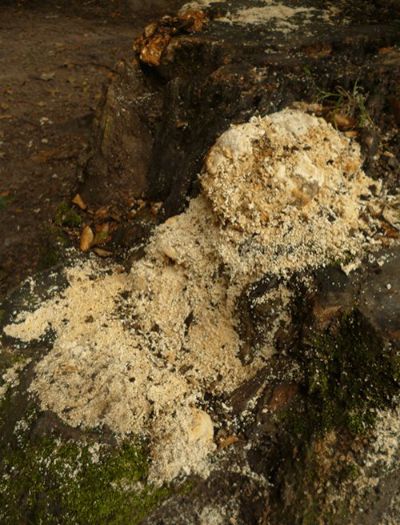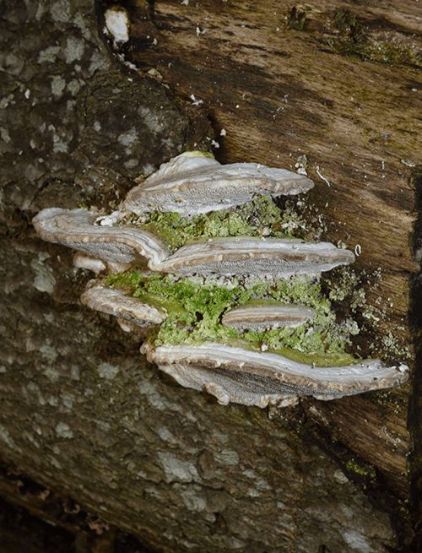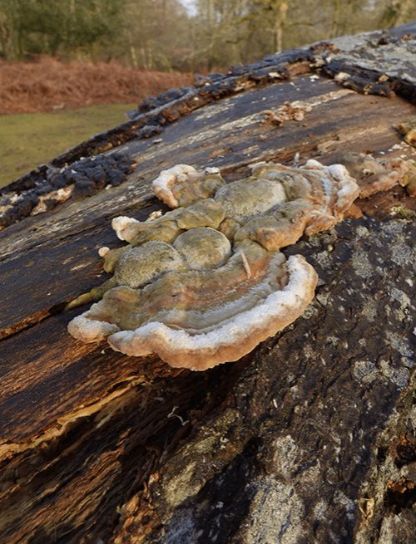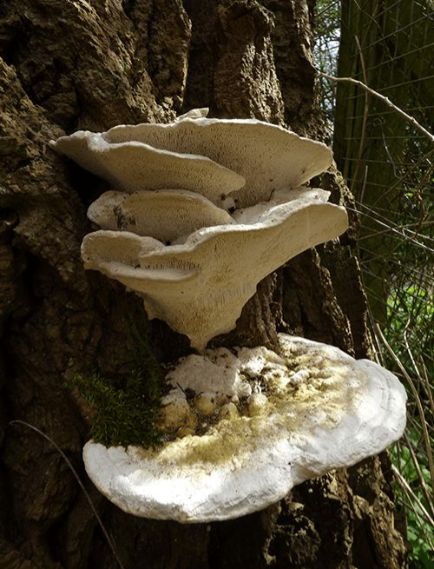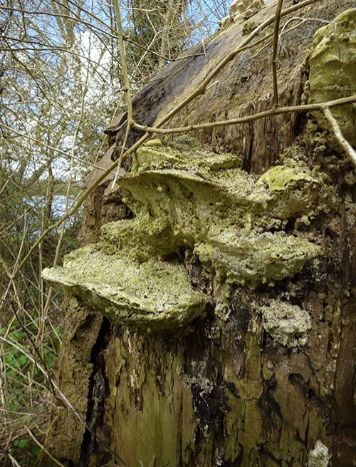Trametes gibbosa
(Pers.) Fr.
Common name
Lumpy bracket; Stump-grinder fungus.
Often found on
Beech, birch, hornbeam, horse chestnut.
Sometimes found on
Cherry, oak, and other broad-leaved species.
Location
Found across the entire scaffold structure of the tree – often on fallen trees and tree parts.
Description
Annual or Perennial. Tough and woody. A little bendy under pressure. Usually in clusters. Quite thick. Can become fair-sized. Upper surface off-white and sometimes slightly hairy and becoming greenish with age towards the centre. Pore surface off-white. Tubes irregular, sometimes elongated and sometimes slotted. Flesh white. Spore white. Anamorphic version appears as a white ‘frassy’ mass with sometimes abundant insect boring. Over-mature brackets can become very dark green and gradually disintegrate into frass.
Confused with
Trametes pubescens (more downy on the upper surface); Trametes suaveolens (often on willow and smells of aniseed); Trametes versicolor (much smaller).
Significance
Attributed to a white rot of the wood. Saprobic. On standing trees, presence of this fungus indicates localised dysfunction. Very unlikely to be a principal cause of failure. If found abundantly, large dysfunctional areas likely are present and structural investigations may be required, should the crown condition be acceptable. Indicative of moderate and advancing decay stages because this fungus follows (and temporarily parasitizes) Bjerkandera adusta.
 Fr. AP.jpg)
 Fr. B.jpg)
 Fr. C.jpg)
 Fr. D.jpg)
 Fr. E.jpg)
